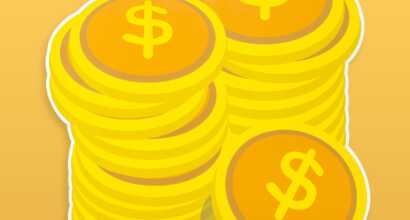Just like any website, adult and porn websites require a strategy for comprehensive search engine optimization. Search engine optimization (SEO) is the practice and process of acquiring paid or organic website traffic through the use of search engines, like Google or Bing.
SEO requires not only a knowledge about the industry that your client’s sites deal with, but also a dynamic view of keyword research, online content, and digital marketing as a field.
Porn site SEO is not much different from a mainstream industry. But, it can be a challenge to correctly optimize your porn website. In this blog post, the Adult Site Broker team is very proud to present our beginner tips for SEO for porn sites.
As a website broker, we at Adult Site Broker know how important SEO is to the success of any site.
What is SEO and Why is it Important?
Search engine optimization, as we briefly touched upon already, is the process used to optimize a website and its overall technical configuration to rank highly in the results of a web search engine like Google. This means that content relevance, linking strategy, keywords, and visuals are optimized to appear in a set of the relevant search results when the user’s search inputs to the search engine feature keywords and phrases related to the content of the website.
Neil Patel, a world-renowned SEO expert, simplifies this definition by explaining that, “SEO is the process of taking steps to help a website or piece of content rank higher on Google.”
Google is the world’s most popular search engine and most daily web traffic from around the globe transits through Google and the site’s search results. That means the search volume for particular keywords and subjects will be higher than any other search engine. Search engine results are generated by constant crawling by algorithms that look for SEO signals.
How to Improve the SEO Score on Your Website?
An SEO score is the score used to measure how well the technical and user-facing aspects of your website were implemented to boost search engine results and ranking performance.
SEO scores are ranked on a scale of 1 to 100 and SEO scores are based on the four areas that affect search engine crawlability and ranking performance. These areas are the technical, content, user experience, and mobile experience. The Google algorithm doesn’t take an SEO score into consideration when indexing and ranking a website with a high score. But, decent SEO scores are linked to higher rankings in SERPs and overall search engines.
Use Clean, Modern Fonts
Fonts are important factors when it comes to boosting your search engine optimization score. Regarding search engines like Google, it is important to define font size and the visual design elements for optimizing fonts. While fonts aren’t a factor in ranking, they are an important factor in usability. Usability and SEO ranking are interconnected, too. Nevertheless, it’s wise to use fonts and font sizes that are modern, clean, and readable. The best font types include Arial and Roboto, or, for long walls of text (if required) a serif font for ease of use.
News sites, for example, often use serif fonts for stories and sans serif fonts for user experience. The ideal font size is anything between 12 to 16 font size. 14 is optimal for most websites, including adult websites that feature static images or video galleries.
Optimize Your Content for Both Users and Search Engines
Optimizing content for search engines is a broad approach. There are a number of things that people can do to improve their content and optimize it by easing user experience and improving overall results. For content to be optimized for SEO, keywords are king. Content that is not only well-written but contains a healthy concentration of primary and secondary key phrases and keywords that are researched and would guarantee to rank based on search volumes.
The text should also be readable for most audiences. To make the content user-friendly and search engine-friendly, the texts should be clear and housed at SEO-friendly URLs that contain keyword elements and titles that clearly and simply describe what is in the text. Headers and subtitles also portion out texts on websites and provide simple bits of reading versus reading a wall of text. This makes the text more accessible to website readers, thus improving SEO.
Create a Sitemap
Regardless of the content of your website, a sitemap is important. Sitemaps are wonderful additions to an SEO strategy because they map out and highlight through a list the most important links on a website. A sitemap can help search engine crawlers to locate and index the links to further increase ranking and presence on the SERPs.
Sitemaps also help with user experience by offering a listed and visual structure of the website, therefore making website navigation easier for users. Sitemaps should highlight the pillars of your site or the pillar content. This includes a home page, an about page, evergreen blog posts, testimonials, user areas, and a plethora of other sites. Web pages to exclude from a sitemap should include secondary and duplicate content or paginated content.
Innerlink Your Inner Pages and Posts to Make It Easier for Google’s Site Crawler
Innerlinking, or internal linking, is a textbook SEO strategy and is considered to be crucial for a website to rank on SERPs. Internal linking on a website has no direct impact on ranking, but it directs the crawlers to detect which pages are the most important and popular on a website. Having this information allows the crawling algorithm to index the most important pages instead of other pages that have little importance and are not a part of the pillar strategy for optimizing a website for improving overall search engine results.
Search Engine Journal points out that “the bigger the site the more pages there are and the likelier that an important page can get buried and remain forgotten in the avalanche of content.”
Internal linking is necessary. When it comes to internal linking, links should direct to home pages, contact pages, sales pages, or the top of the site’s blog directory. This way, the pillar pages are indexed during a crawl by the Google site crawling algorithms.
Optimize Page Speed (Loading and Site Speed is A Big Factor With Google)
Page speed is the measurement of how long content on a site loads. This measurement is also referred to as page load time or time to the first byte, according to Moz. Google has indicated time and time again that page speed measurement is a factor that signals an indicator of rank page results. Page speed is measured by the crawling algorithm and a slow page speed could have a negative impact on search results, even if you have an SEO strategy that places the site ranking at a high placement on SERPs. Page speed also impacts the metric of user experience, which is also a crucial element for having a robust SEO-optimized website. Users will not wait for the first byte longer than just a few seconds before navigating away from the web page.
A page speed load time between 0 to 4 seconds is ideal. It should also be noted that the first 5 seconds during page load are the most important when securing a user conversion. Adult sites with a long page load time could be losing potential premium users due to bloat and a load time that is over 5 or 6 seconds. To optimize page speed, SEO specialists and webmasters should compress files, including images and videos and use a quality hosting company. See what we did there? We used an internal link.
Optimize Your Titles, Images, and Descriptions
One surefire way to improve your website’s SEO would be to optimize your text titles, images, and web page descriptions. With long walls of text, sectioning off text into digestible bite sizes can be accomplished with very little challenge by using titles, headers, and the correct subtitles. Headers and titles should feature the keyword or keyphrase and should be used accordingly. A good rule of thumb is to use headers for primary topics and separate the texts every 100 to 200 words. Top-level, secondary, and tertiary headings dictate to search engine crawlers what text is the most important and whether or not to index or even rank web pages.
Other factors to improve optimization and ranking also include the use of alternate texts and image descriptors that incorporate keywords and phrases. At least on a WordPress build, alternate texts give a very clear, literal description of what is happening in the image will help crawlers rank images in search engine image results as well as provide other rich elements to important text.
Serve Content Over HTTPS
HTTPS protocol is an indicator of whether a site is secure or not. HTTPS has become standard in recent years, making it a crucial aspect of crawling and SERP. HTTPS was announced as a signal in search engine results by Google in 2014, making it a dynamic element to not only SEO but to user experience and overall usability. HTTPS combines Hypertext Transfer Protocol and Transport Layer Security (TLS) /Secure Sockets Layer (SSL) protocol to ensure a secure connection to a particular website and its IP address. HTTPS and activating an SSL certificate will give a slight boost in search engine ranking. It makes sense: Users are more likely to navigate to the secure website over the unsecure website. Google’s crawlers take this sentiment into account and rank secure websites higher than websites that don’t have SSL activated.
Create More Useful Content Related to Your Industry
One final tip to improve your website’s SEO would include the creation and publication of content that directly relates to the industry and its adjacent topics. Adult Site Broker, for example, operates in a niche combination of the adult entertainment and tech space.
On our blog posts, we not only post promotional content as it relates to the type of listings we currently have in our inventory but also thought leadership and tips related to the many verticals in adult entertainment and technology-related topics. Obviously, you’re reading this blog post about search engine optimization as it relates to not only mainstream websites but also sites that serve adult and pornographic subject matter.
These blog posts or types of content can vary but should feature keywords and key phrases that are researched in order to index this content in the particular search engine results pages. Adding the industry and related content component will allow this content to rank in searches that have healthy search volumes that deal directly with the industry or topic.
We at Adult Site Broker hope you’ve enjoyed this post. Please reach out to us if you have any questions.



